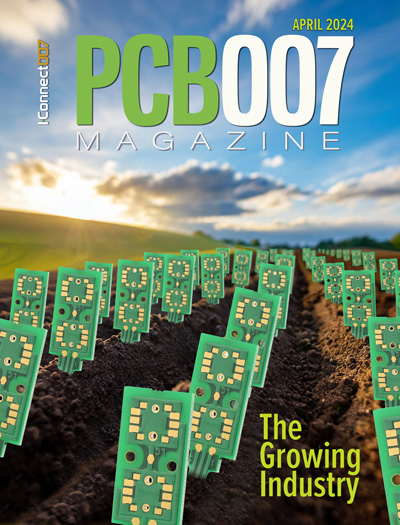-

- News
- Books
Featured Books
- pcb007 Magazine
Latest Issues
Current Issue
The Growing Industry
In this issue of PCB007 Magazine, we talk with leading economic experts, advocacy specialists in Washington, D.C., and PCB company leadership to get a well-rounded picture of what’s happening in the industry today. Don’t miss it.

The Sustainability Issue
Sustainability is one of the most widely used terms in business today, especially for electronics and manufacturing but what does it mean to you? We explore the environmental, business, and economic impacts.

The Fabricator’s Guide to IPC APEX EXPO
This issue previews many of the important events taking place at this year's show and highlights some changes and opportunities. So, buckle up. We are counting down to IPC APEX EXPO 2024.
- Articles
Article Highlights
- Columns
Search Console
- Links
- Events
||| MENU - pcb007 Magazine
Electrical Testing of Passive Components
September 2, 2014 |Estimated reading time: 1 minute
Introduction
Substrates have become more critical with regard to pitch and density in today’s designs with challenges for passive components in terms of surface placement. This negates the opportunity for high speed, high cost components to be placed on the surfaces of the PCB. With this the capacitance and resistive components have to be embedded into the design. This has been accomplished with the advent of buried capacitance cores and buried resistors. Unfortunately, this has caused some challenges to the ET test centers/labs in the ability to effectively test these buried passive components. Processes have had to change and adapt to these new technologies. The paper will discuss what these new technologies are and how the electrical test arena has adapted to provide accurate testing of the buried resistors and accommodate the buried capacitive cores to not receive false errors from the grid testers and flying probes.
Resistors
In the past, pull-up, terminating and voltage dividing resistors have been placed on the surface of the PCB. Early applications were standard carbon resistors placed on the board utilizing plated through-holes.
As can be seen in Figure 1, the standard carbon resistor took up a lot of space on the PCB. You will also notice in the photo that capacitors are also stealing valuable space from the surface topography. As time progressed, SMT technology was introduced and the older, bulky standard carbon resistor was replaced by the newer SMT packages (Figure 2).
This was a very popular innovation to the industry as now the surface footprint was drastically reduced and the topography on the surface of the PCB was now open to accommodate more active components which reduced the overall size of the PCB, but also allowed the complexity of the designs to grow. No longer was a PTH as needed for the resistor, which allowed the multilayer to expand its capabilities on the inner layers to provide not only an overall smaller PCB, but a more powerful final product.
Read the full article here.
Editor's Note: This article originally appeared in the July 2014 issue of The PCB Magazine.
Suggested Items
D Coupon Testing and Data Insights With GreenSource Fabrication
04/17/2024 | Marcy LaRont, PCB007 MagazineMarcy LaRont spoke with Steve Karas of GreenSource Fabrication at the SMTA UHDI conference in March. He presented a case study that GreenSource undertook with a customer on critical via reliability with advanced materials and used the experience to highlight the importance and effectiveness of D coupon testing. He also discussed GreenSource’s approach to data aggregation and a new system they developed to use collected data effectively.
Three Industry Leaders Receive IPC President’s Award
04/17/2024 | IPCIn recognition of their leadership and significant contributions of time and talent to IPC and the electronics industry, three IPC volunteers were presented with the IPC President’s Award at IPC APEX EXPO in Anaheim, Calif., on April 9, 2024.
Yamaha to Showcase Latest-generation Assembly Equipment and Software Tools at SMTconnect
04/16/2024 | Yamaha Robotics SMT SectionYamaha Robotics SMT Section will team with its distributor ANS Elektronik to showcase innovations for high-speed surface mount assembly at SMTconnect 2024.
TT Electronics Awarded Contract with Kongsberg Defence and Aerospace
04/11/2024 | TT ElectronicsTT Electronics, a leading provider of global manufacturing solutions and engineered technologies, announced today that its Fairford UK business has been awarded a new contract with long-standing customer Kongsberg Defence and Aerospace (Kongsberg) for the production of complex cable harness solutions.
Infineon, Amkor Deepen Partnership and Strengthen European Supply Chain for Semiconductor Solutions
04/10/2024 | InfineonInfineon Technologies AG, a leader in power systems and IoT, is strengthening its outsourced backend manufacturing footprint in Europe and announced a multi-year partnership with Amkor Technology, Inc., a leading provider of semiconductor packaging and test services.


